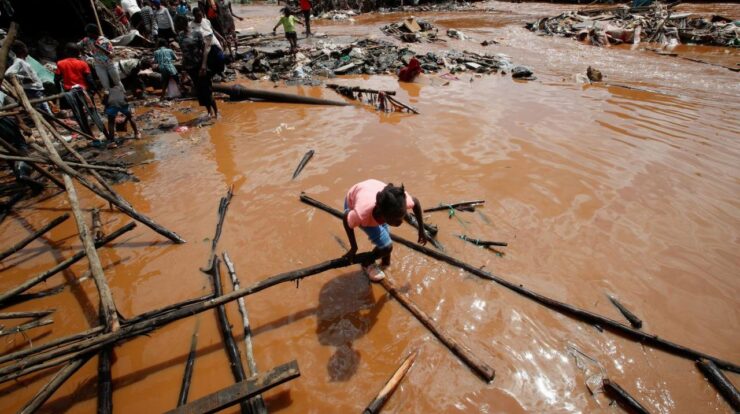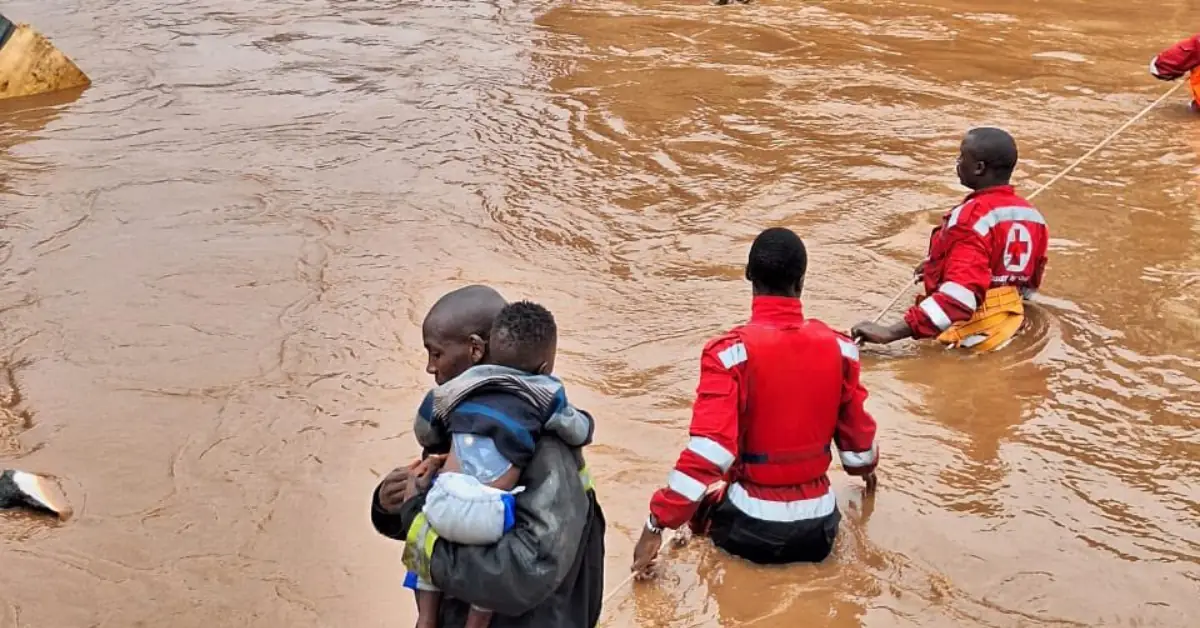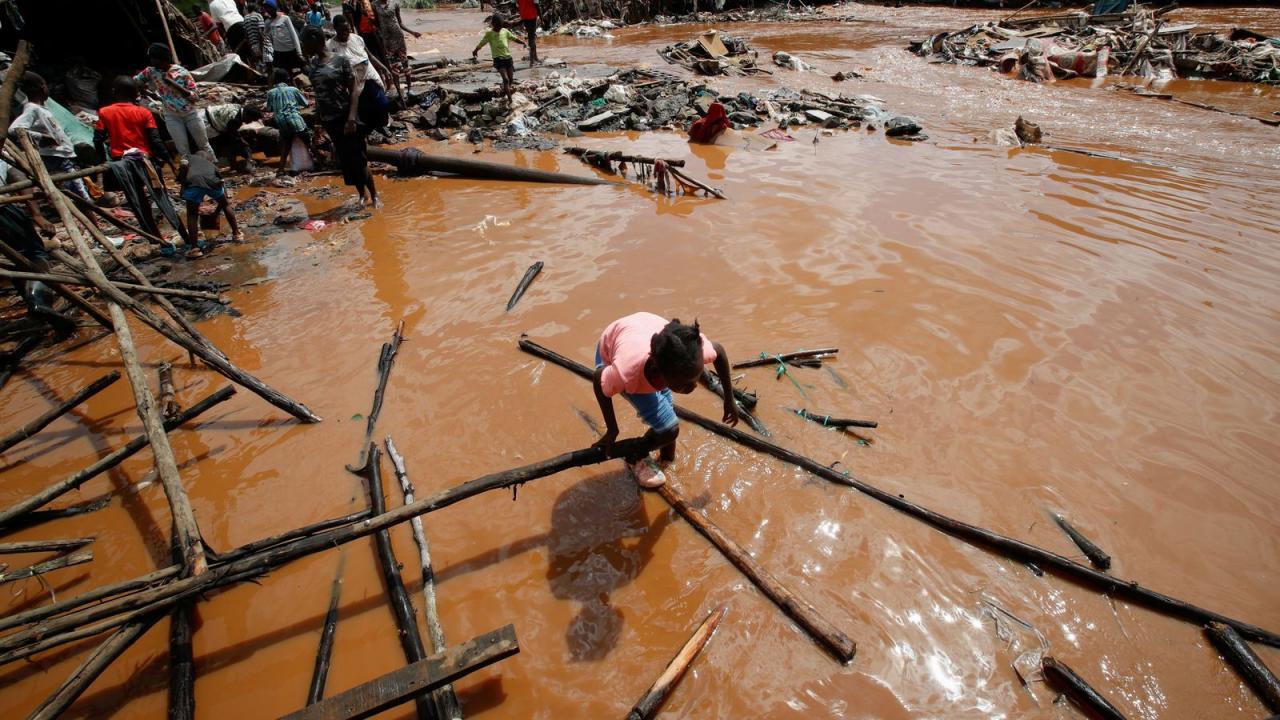
Kenya nairobi flooding – The relentless downpours in Nairobi, Kenya, have triggered widespread flooding, submerging homes, disrupting infrastructure, and posing significant challenges to the city’s resilience. The torrential rains have inundated vast areas, leaving a trail of devastation in their wake.
As the floodwaters continue to rise, authorities and aid organizations are working tirelessly to address the immediate needs of affected communities while grappling with the long-term implications of this environmental crisis.
Nairobi Flooding Situation
Nairobi, the capital of Kenya, is currently facing a severe flooding crisis. The city has been experiencing heavy rainfall since March 2023, leading to widespread flooding in many parts of the city.
The flooding has affected major roads, bridges, and buildings, causing significant disruption to transportation and infrastructure. The flooding has also caused widespread damage to homes and businesses, resulting in economic losses and displacement of residents.
Causes and Contributing Factors
- Heavy rainfall: Nairobi has been experiencing unusually heavy rainfall in recent months, which has exceeded the capacity of the city’s drainage systems.
- Poor drainage infrastructure: The city’s drainage systems are inadequate and poorly maintained, which has contributed to the flooding.
- Deforestation: Deforestation in the surrounding areas of Nairobi has reduced the natural absorption capacity of the soil, leading to increased runoff and flooding.
Impact of Flooding on Nairobi
Infrastructure Damage
- Roads and bridges: The flooding has damaged several major roads and bridges, making them impassable and disrupting transportation.
- Buildings: Many buildings have been damaged by the flooding, including residential, commercial, and government buildings.
- Utilities: The flooding has also disrupted electricity, water, and sewage services in many parts of the city.
Economic Consequences
- Business disruptions: The flooding has caused widespread business disruptions, as many businesses have been forced to close due to flooding or lack of access.
- Loss of income: The flooding has resulted in a loss of income for many businesses and individuals.
- Increased poverty: The flooding has exacerbated poverty in Nairobi, as many people have lost their homes and livelihoods.
Social Impact, Kenya nairobi flooding
- Displacement of residents: The flooding has displaced thousands of residents, who have been forced to leave their homes due to flooding.
- Health concerns: The flooding has increased the risk of waterborne diseases, such as cholera and typhoid.
- Social unrest: The flooding has caused social unrest in some parts of the city, as residents have protested the government’s response to the crisis.
Government Response to Flooding

Emergency Measures
- Evacuations: The government has evacuated thousands of residents from flooded areas.
- Emergency shelters: The government has set up emergency shelters to provide temporary housing for displaced residents.
- Food and water distribution: The government is distributing food and water to flood-affected communities.
Long-Term Solutions
- Drainage system improvements: The government is planning to improve the city’s drainage systems to prevent future flooding.
- Floodwalls and levees: The government is considering building floodwalls and levees to protect the city from flooding.
- Urban planning: The government is reviewing urban planning regulations to reduce the risk of flooding.
Community Response to Flooding

Community-Led Initiatives
- Flood prevention: Community members have organized flood prevention initiatives, such as clearing drainage channels and planting trees.
- Preparedness: Community members have developed flood preparedness plans to help their communities respond to flooding.
- Recovery: Community members have organized recovery efforts to help their communities rebuild after flooding.
Impact of Community Involvement
- Reduced flood risk: Community-led flood prevention initiatives have helped to reduce the risk of flooding in some areas.
- Improved preparedness: Community flood preparedness plans have helped communities to respond more effectively to flooding.
- Accelerated recovery: Community recovery efforts have helped to accelerate the recovery process after flooding.
Conclusion: Kenya Nairobi Flooding
The flooding in Nairobi serves as a stark reminder of the urgent need for sustainable urban planning and climate adaptation measures. By investing in infrastructure resilience, promoting responsible land use practices, and fostering community engagement, Nairobi can emerge stronger and more resilient in the face of future challenges.
FAQ Section
What are the primary causes of flooding in Nairobi?
Nairobi’s flooding is primarily attributed to a combination of factors, including heavy rainfall, poor drainage systems, unplanned urbanization, and encroachment on wetlands.
What are the immediate priorities for flood response?
Immediate priorities include evacuating affected residents, providing emergency shelter, distributing food and clean water, and restoring essential services.
How can communities contribute to flood prevention?
Communities can play a crucial role by participating in flood preparedness initiatives, promoting responsible waste disposal, and advocating for sustainable urban planning.